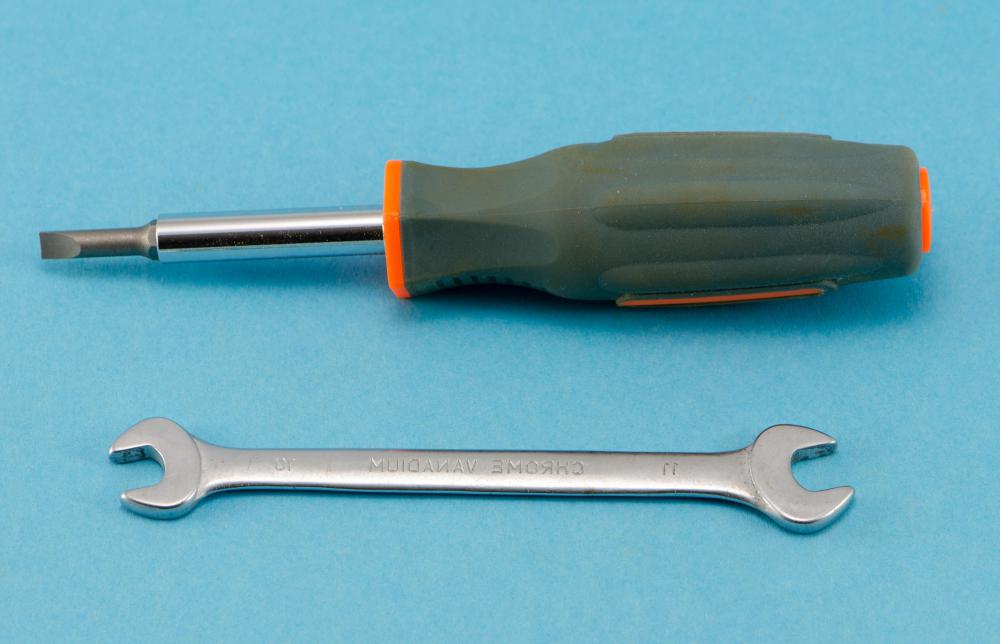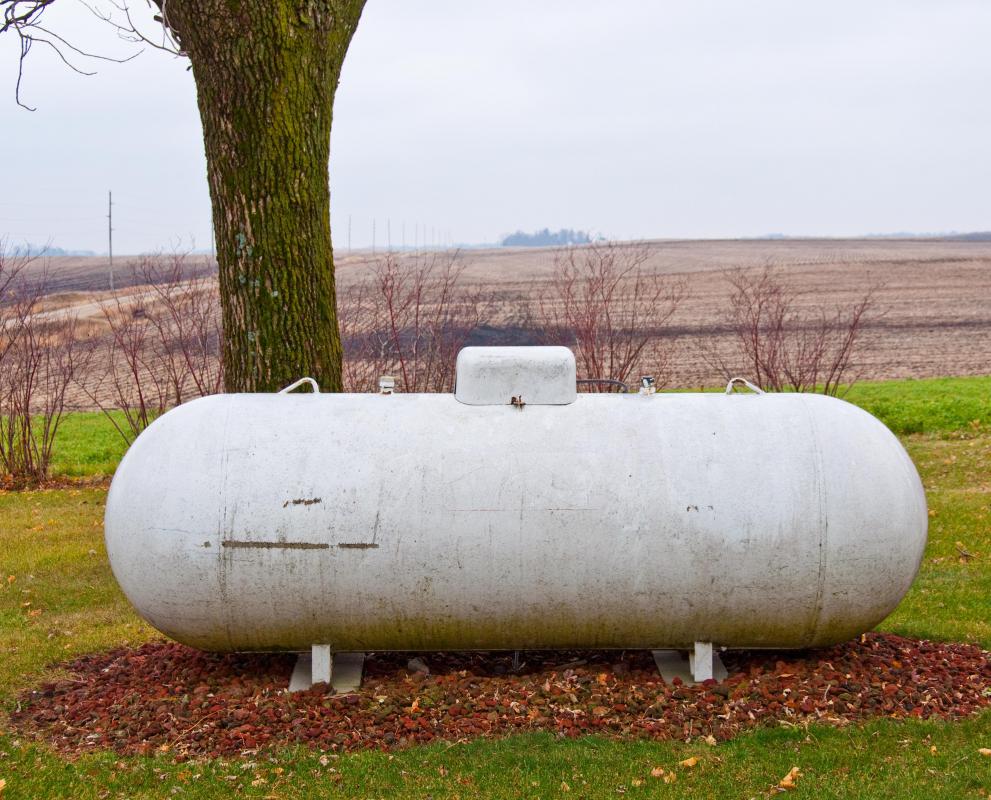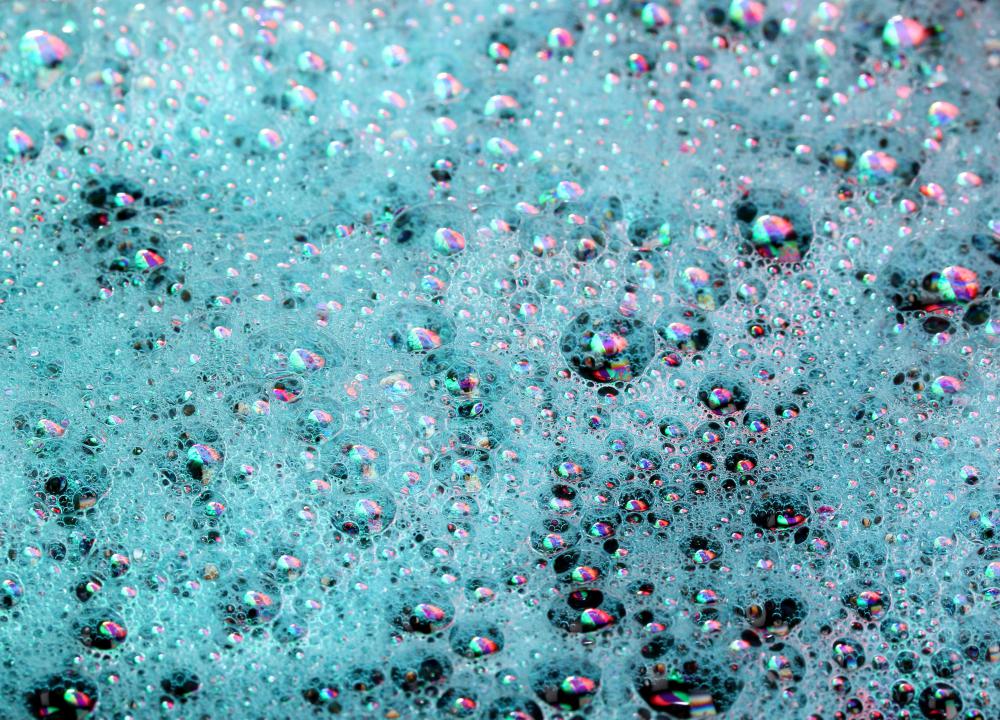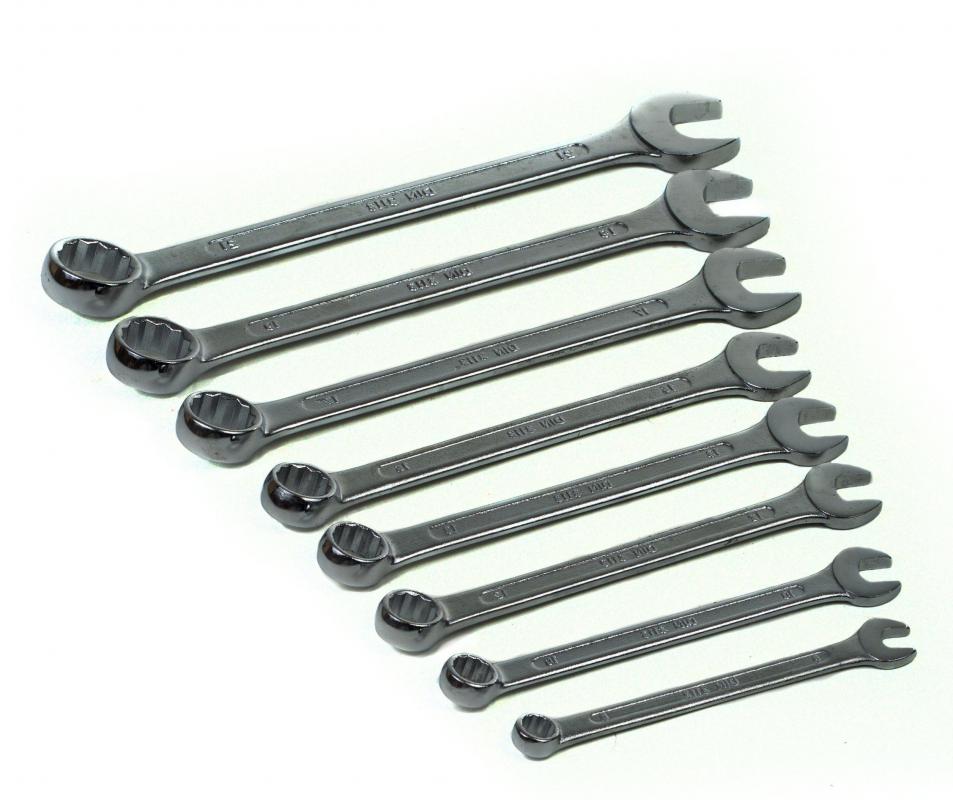At HomeQuestionsAnswered, we're committed to delivering accurate, trustworthy information. Our expert-authored content is rigorously fact-checked and sourced from credible authorities. Discover how we uphold the highest standards in providing you with reliable knowledge.
How can I Convert a Gas Stove to Propane?
Converting a gas stove to propane is usually relatively straightforward, at least from a technical perspective, though it still requires a bit of expertise and a lot of care. You are essentially going to shift the fuel line from your natural gas supply to your propane supply, making needed adjustments to burner strength and gas output along the way. Many manufacturers sell kits designed specifically for making this sort of conversion, and experts often recommend this route if you aren’t comfortable enough with wiring and gas lines to figure out the technicalities for yourself. Even with a kit, though, you’ll need to be prepared to pay close attention to detail and learn how to identify problems early on. The most important things for success tend to be planning, patience, and attention to detail. Propane conversions can save a lot of money and may be better for the environment, but only if they’re done correctly.
Assess the Situation

The very first thing you’ll want to do is study the specifics of your stove. Count up the burners, look at where it attaches to the gas line, and figure out as much as you can about when and where it was manufactured. All of this may seem rather trivial, but it will help you get the right materials and will enable you to ask the right questions if you need to get help from a professional at any point along the way. It’s usually a lot easier to have all of the details and basic information before you start taking things apart and making readjustments.
Needed Tools

In most cases all you’ll need to get started are screwdrivers in sizes that correspond to your stove’s hardware and a basic wrench. The goal is to redirect the fuel away from the natural gas lines in your home or building and towards a new propane line, likely one that is connected to a residential propane tank somewhere on your property. The hardest part is usually figuring out how to cap or control the flow of propane once you’ve switched the fuel source, and many beginners find that using a commercial kit is the easiest and most foolproof option. Using a kit helps ensure that the conversion will be done correctly and that the finished stove will function properly.

Before unscrewing anything or changing any settings, though, it is very important to shut off the gas being supplied to your stove. Depending on the make and model of your equipment, you may need to wait a few moments after turning things off before you begin disassembling your valves in order to let the line drain. Opening or reattaching a live line can lead to spills and other hazardous conditions.
Adjust Your Orifices

Natural gas and propane burn at different rates, so controls are needed to maintain the proper amount of gas being burned. The amount of gas delivered to the flame will be regulated by a color coded orifice at each burner, which is simply a fitting sized for the appropriate type of gas. You will need to adjust the orifices on each burner so that they’ll be optimized for propane rather than gas.
Importance of Control Valves

Once the orifices are in their proper location, you’ll need to locate the gas regulator, which is usually found under the stove cover. There is a cap on the gas regulator that must be removed and then refitted using the opposite side of the cap. Another adjustment must be made on the main burner tube where it enters the stove. This is another orifice that must be turned clockwise with a wrench until it cannot be turned further. If there is a broiler orifice, it must be adjusted in the same way.
Reconnect Your Fuel Line

Once the stove is ready for propane you need to reattach the line. If the connection is threaded, it is important to use pipe tape or thread compound to ensure a tight fit. In the case of threaded connections with flare cones inside the female ends, it is best not to use any tape or compound so you don’t damage the integrity of the opening, which can allow fuel to seep through.
Leak Test
The final thing you’ll need to do to convert a gas stove to propane is to test for leaks. One of the easiest ways to do this is to mix a solution of soapy water with about half a cup (118 ml) of water and a drop of ordinary dish soap or hand wash. Apply a small amount of the solution on the propane connection. If bubbles form in the soapy mixture, the connection must be reseated, but if no bubbles appear, the connection is tight. Once this test is complete, it is safe to test the propane stove and ensure that it is working properly.
General Precautions
Both propane and natural gas are highly combustible and can be dangerous to work with. The steps you’ll take to convert a gas stove to propane aren’t necessarily challenging in and of themselves, but missteps, overlooked connections, or leaking valves can lead to a number of bad situations. You could end up with a fuel spill, for instance, or you could create a dangerous condition that could lead to erosion or combustion at some future time. Most experts recommend that you take your time when making the conversion, and ask for help if you aren’t sure you’re doing something correctly.
AS FEATURED ON:
AS FEATURED ON:
















Discussion Comments
I made the decision to convert to propane not only for the financial reasons, but also because of its environmental impact. Propane combustion is much cleaner than gasoline and other liquid hydrocarbons, though not quite as clean as natural gas combustion. Environmentally, it’s usually greener to cook with propane than with electricity.
With a perfect burn, attainable only in theory, the only by-products are heat, carbon dioxide and water vapor. So, it can be used for indoor heating applications, but use a stove that provides a very high combustion efficiency and, especially, a low-oxygen sensor that will shut it down if the O2 gets low. Don't try to convert your appliances if you're not confident enough that you can do it, since it's still flammable and can cost our lives.
I'm not sure if this can help you guys or not, but I was really on the verge of giving up on deciding about using propane conversions, but I think somehow I found the answer.
I am a newbie here but I would just like to share my experience, since some people might feel the same way. At first I was a bit doubtful if converting gas to propane would really fit my expectations, but I've come to realized that yes, it is the answer for my longing prayers. It's very affordable, convenient and is truly a lifesaver. I don't need to spend too much on gasoline and I enjoy the perks of saving my precious time and energy.
There are good references online for your concerns about propane conversions.
I read your blog post. It was very informative As I am a regular user of propane, I like to enhance my knowledge about propane. I would request the writer of this blog post to create a page on Facebook and share this posts and other similar posts written by him there. -- Stephen B.
Just to make it simple: NG has lower heat value for same burner sizes, and you should not put propane in this burner as is.
The main conversion issues are:
1- The supply pressure into the main valve is higher in the case of switching to LP, so that means another regulator must be used.
2- The orifice at the burner input should be reduced.
3- The air/gas mixtures should be adjusted (in LP the amount of air is the same, but the volume of gas is 1/3)
4- The small holes around the burner head, where the flame is issued, should be smaller, otherwise the gas-air mixture speed is reduced and one could have a back fire into the body of the burner (in venture type burners).
5- The CO should be measured and controlled to prevent poisoning the surrounding area. I'd do it with an original parts kit.
I'm having problems converting my kenmore gas stove to LP. I convert the burners on top, but if I turn all them at the same time the flame get smaller on some of the burner. The flame is blue which is good. I also having problem with the oven burner. I flip the part inside the regulator already. No fire in the oven yet. I'm having problems with the burners in the oven. I can't get it to work.
@daphne: If you're seeing yellow in your flame, your orifices need cleaned (an air hose normally works for that). When properly fitted there should be no difference, but it's always wise to watch your flame as you adjust, and not merely the dials.
@anon38167 - I would consult a professional before trying to convert to natural gas. It is so hazardous, you do not want to mess around with it! It would have to be connected directly to your gas line
something to be aware of when switching from one to the other is that natural gas burns hotter than propane. If you are used to cooking with gas, you will that water, for instance, will take longer to boil on a propane burner than on a natural gas stove burner.
Conversely, if you are used to grilling with propane, you should be careful when switching to natural gas as your food may cook more quickly than you're used to. You can actually see it in the flame. A propane flame will have some yellow in it, while a natural gas flame should be all blue (meaning it's hotter).
how do I convert a propane BBQ with a side burner to natural gas?
how do I convert a propane burner to natural gas?
Post your comments